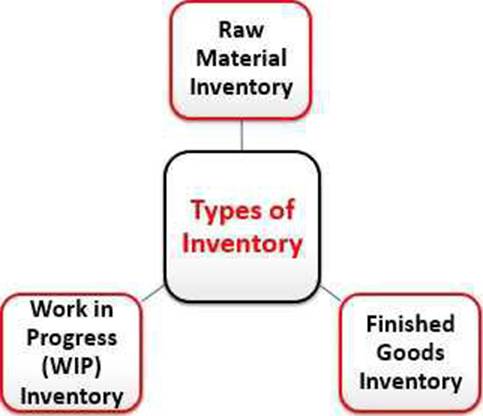- All Exams Instant Download
Finished goods
Finished goods
A . 1, 3 and 4
B. 1, 2 and 4
C. 2, 3 and 4
D. 2, 3 and 4
Answer: A
Explanation:
The normal breakdown in a manufacturing organisation would be raw materials, components, work in progress and finished goods.
Following are the different types of inventory:

Raw materials are the basic materials that a manufacturing company buys from its suppliers, and that is used by the former to convert them into the final products by applying a set of manufacturing processes. For example, aluminum scrap is the raw material for a company that produces aluminum ingots. Flour is the raw material for a company that produces bread or pizza. Similarly, metal parts and ingots are the raw materials bought by a company that manufactures cars, and crude oil is the raw material for an oil refinery.
Work in progress inventory can also be called semi-finished goods. They are the raw materials that have been taken out of the raw materials store and are now undergoing the process of their conversion into the final products. These are the partly processed raw materials lying on the production floor. And they have also not reached the stage where they have been converted into the final product.
Finished goods are indeed the final products obtained after the application of the manufacturing processes on the raw materials and the semi-finished goods discussed above in the article. They are saleable, and their sale contributes fully to the revenue from the core operations of the company.
Reference: – Types of Inventory
– CIPS study guide page 82-83 LO 2, AC 2.1
Latest L4M7 Dumps Valid Version with 137 Q&As
Latest And Valid Q&A | Instant Download | Once Fail, Full Refund
Subscribe
Login
0 Comments
Inline Feedbacks
View all comments

